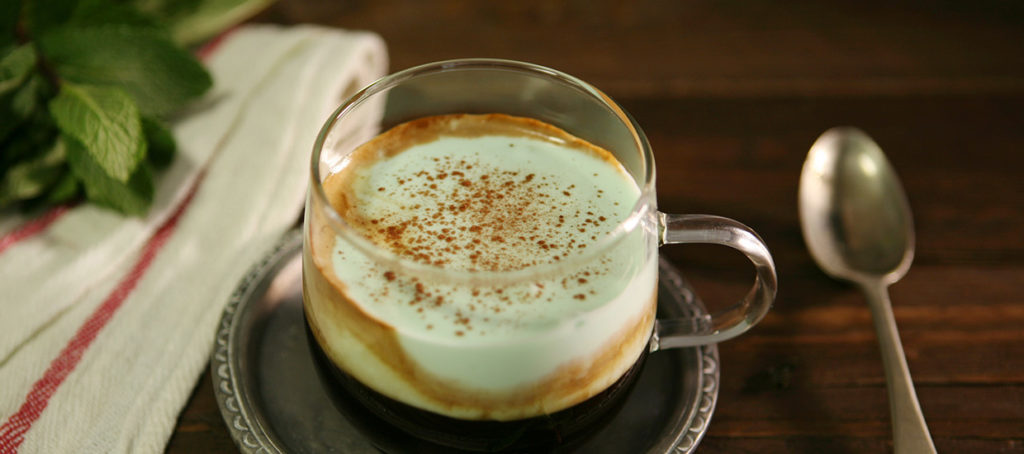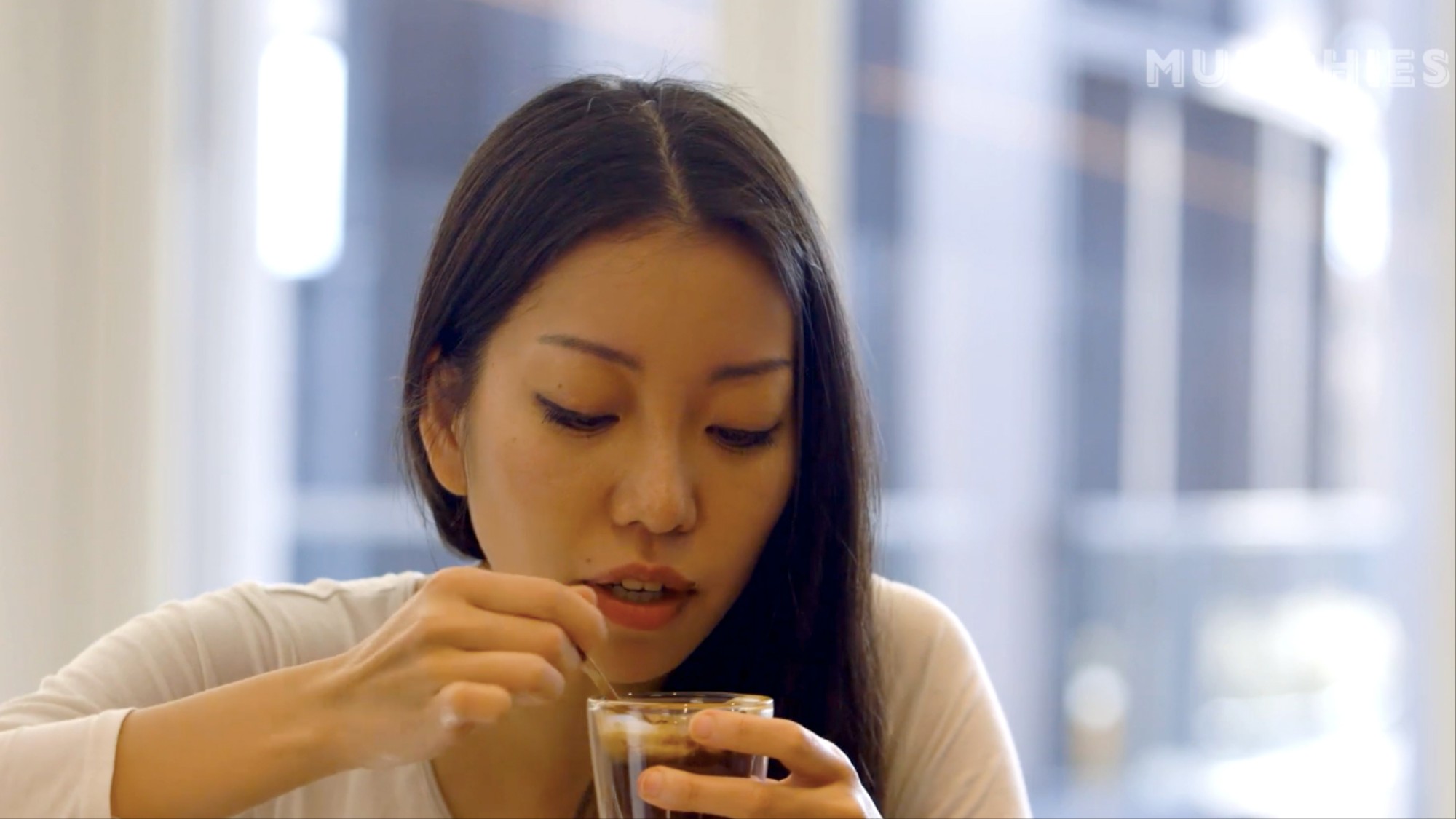In collaboration with MUNCHIES Italia for Lavazza, Wakapedia is proud to introduce you to an exclusive set of Italian regional coffee recipes.
As a correspondent for MUNCHIES Italia, Sara Waka set off for Turin to visit the new head officeof the historic coffee manufacturing company Lavazza – the brand new, visually striking ‘Nuvola’ (the ‘Cloud’ – ed.). Once there, she was asked to tryout three coffee recipes, which differed from each other in terms ofgeographical origin as well as method of preparation– these beveragesbeing Bavareisa Torinese, Caffè Padovano and, last but surely not least, Caffè Napoletano. However, before going any further with revealing the secrets of the above coffee-based delights, double-check whether your cupboard is well-stocked with chocolate, liquid cream, mint syrup, hazelnut paste and, it goes without saying, the most important ingredient: coffee! Ready, set, go!
Forerunner of the best-known bicerin, BAVAREISA TORINESE is the oldest sweet treat among the ones we are presenting, its origins can be tracedback as far as eighteenth-century France; on this matter, while in ‘bicerin’chocolate, coffee and whipped cream are strictly layered one on top of the other, Bavareisais a tasty mix of chocolate and coffee topped witha layer of whipped cream. Legend has it that this delicacy was much beloved by personalities such as Italian politician Camillo Benso, Count of Cavour, and French writer Alexandre Dumas.
How to make Bavareisa Torineseat home
Pour 50 ml of hot chocolate into a glass. Add50 ml of coffee (that is, an espresso lungo). Now, top it with 50 ml of slightly stirred, cold liquid cream, making sure the cream does not blend with the chocolate – coffee mixture.

The next mouthwatering variation takes us to the Northeastern city of Padua, the birthplace of (drumroll)… CAFFÈ PADOVANO– also known as CAFFÈ PEDROCCHI among the citizens of Padua, after and in tribute to the well-known historic café where the recipe was invented. Back in 1826, entrepreneur Antonio Pedrocchi took the existing family to a new level, conceiving a coffee processing plant that combined on the same premises the equipment needed for roasting coffee and making ice, as well as a multi-room café anda patisserie.
Yet, we stillhave not covered the most interesting point of the story, that is: what lies at the basis of the peculiar union of coffee and mint? The answer is easier than you might think: the choice was dictated by a marketing strategy ahead of its time, conceived of by the Pedrocchi family itself. The green colour of the mint syrup used for the preparation of Caffè Padovano was meant to be a clear reference to the upholstery that still decorates one of the café rooms – in fact, named (louder drumroll now)… the Green Room!
How to make caffè padovano at home
Pour 20 ml of cold whole milk into a large bowl; add 70 ml of liquid cream and 30 ml of mint syrup. Whip the contents with an electric whisk until you obtain a soft cream. Prepare an espresso in a cappuccino cup, add 60 ml of the previously prepared cream and mint mixture. Give a last touch by sprinkling unsweetened cocoa powder on top.

We are going to go out witha bang, as we are bound now for towardsthe sun-kissed coast of Southern Italy where CAFFÈ NAPOLETANO awaits us. The well-devisedcombo coffee – hazelnut paste is tightly connected to the production of the ‘hazelnut of Giffoni’ – among the finest and mostintensely flavoured varietiesof nut, typical of the area of the city of Salerno, just south of Naples.
Here’s an interesting fact: the Campania region (whose capitalis Naples– ed.) ranks high, in terms of quantity and quality, in the world production of hazelnuts. Have you ever heard of, or tried, Neapolitan wafers – the crunchy, chocolate-filled sandwich biscuits from Austria? Bingo! The hazelnuts in their filling come preciselyfrom here!
How to make Caffè Napoletano at home
Pour 150 ml of cream and 100 g of hazelnut paste into a large bowl, whipping everything with an electric hand whisk. Separately, prepare an espresso in a small glass. Top it with 30 ml of the hazelnut cream, and decorate with a light sprinkling of ground coffee.

Description: Sara Waka
Edited by: Edoardo Parenti







